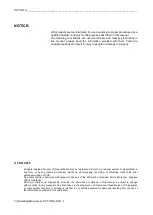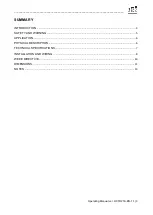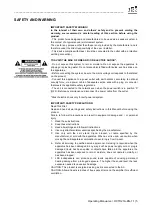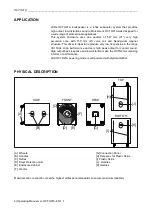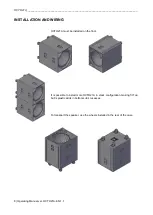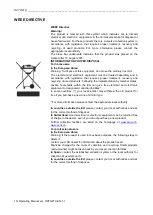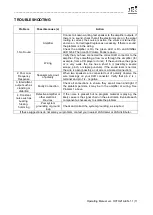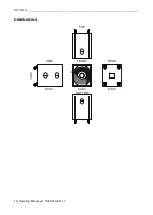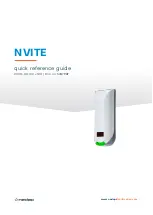
______________________________________________________________________________
Operating Manual ver. OCTO21A-EN-1.1 |11
TROUBLESHOOTING
Problem
Possible cause (s)
Action
1. No Sound
Amplifier
Connect a known working test speaker to the amplifier outputs. If
there is no sound, check that all the electronics are on, the signal
routing is correct, the source is active, the volume is turned up,
and so on. Correct/repair/replace as necessary. If there is sound,
the problem is in the wiring.
Check the amplifier is On, the green LED is On and SIGNAL
LED blink. Then control Volume Knobs is open.
Wiring
Verify that you have connected the correct XLR connector to the
amplifier. Play something at low level through the amplifier (for
example, from a CD player or tuner). If the sound level has gone
or is very weak, the line has a short in it (possibly a severe
scrape, pinch, or staple puncture). If the sound level is normal,
the wire is open (possibly a cut wire or a missed connection).
2. Poor Low
Frequency
Response
Speakers wired out-
of-polarity
When two speakers are connected out of polarity observe the
wire markings on your XLR connector. Verify that pin 2 is +
terminal and pin 1 is - negative.
3. Intermittent
output such as
crackling or
distortion
Faulty Connection
Check all connections to ensure they are all clean and tight. If
the problem persists, it may be in the amplifier or wiring. See
Problem 1 above.
4. Constant
noise such as
buzzing,
hissing,
humming
Defective amplifier or
other electronic
Devices
If the noise is present but no program material is playing, the
likely cause is the signal chain in the electronics. Evaluate each
component as necessary to isolate the problem.
Poor system
grounding or ground
loop
Check and correct the system grounding, as required.
If these suggestions do not solve your problem, contact your nearest LSS dealer or LSS distributor.


